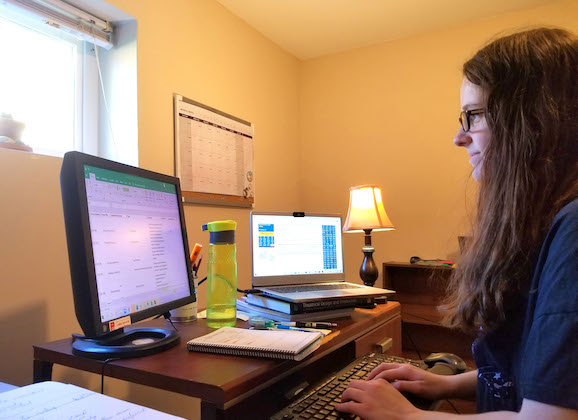Interview with Dr. Raad Nashmi
Guest post by Armin Bayati
Today’s interview is with Dr. Raad Nashmi of the Department of Biology.

What were your ambitions for getting into Biology?
This was constantly evolving as I got into university. As an undergraduate at the University of Toronto, I did a BSc specializing in Human Biology.
I remember taking a third year course in physiology and was fascinated with the labs associated with that course. In particular, I was intrigued by the recording of the compound action in a frog nerve preparation, which was my first foray into neurophysiology.
I also found another experiment that was also interesting, in which we stimulated the frog nerve to evoke contraction of the frog gastronemius muscle. I think at that point I was fascinated and interested in neurophysiology.
I was interested in how neurons produced these electrical events and I was interested in how neurons and the brain in general functioned. So after my BSc I was interested in neuroscience and applied to graduate school but did not know whether I would like research.
It was during my MSc that I realized that I enjoyed doing experiments and therefore enjoyed research. At that point I decided that I wanted to dedicate my efforts to a scientific career and decided to do a PhD with a long term goal of also doing a postdoc.
What research did you do as an undergraduate and graduate student?
I did not do an honours as an undergraduate. I only did experimentation in labs in undergrad.
I started research when I did an MSc at the University of Toronto in William MacKay’s lab, where I recorded EEGs in humans during hand movements and analyzed the spectral frequency patterns. Then I did a PhD in Dr. Michael Fehlings’ lab, also at the University of Toronto. It is there I did research examining the mechanisms of the pathophysiology of spinal cord injury in rats.
My thesis examined how alterations in potassium channel activity on surviving injured axons resulted in dysfunctional axonal conduction properties. I used techniques of electrophysiology and confocal imaging.
From there I joined Henry Lester’s lab at the California Institute of Technology to study nicotinic acetylcholine receptors. I gained expertise in patch-clamp electrophysiology, molecular biology and knock-in mouse technologies.
I produced a knock-in mouse with fluorescent protein tagged nicotinic receptors and examined how chronic nicotine can alter the expression and function of nicotinic receptors and neuronal excitability in specific midbrain circuits. Then I applied to academic positions and arrived at the University of Victoria.
What do you think is the most pressing issue in the field of Biology today?
The field of Biology is vast. My interest is in neuroscience and as far as this field is concerned we are on the cusp of great advances in this field because of the emerging and advanced technologies such as mouse transgenics, optogenetics, molecular biology and advanced microscopy imaging techniques.
Scientists are now able to reveal the detailed connections and circuitry between neurons and how their activity regulates behaviour.
Do you have any suggestions for undergraduate students entering Biology?
It may take a while to know what your interests truly are but keep working at it and be disciplined in your studies.



